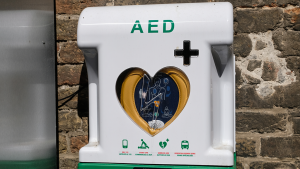North Vancouver’s Dayton & Knight Ltd.’s engineering expertise in creating North America’s longest and deepest ocean discharge pipe has won the firm a fifth international award.
VANCOUVER
North Vancouver’s Dayton & Knight Ltd.’s engineering expertise in creating North America’s longest and deepest ocean discharge pipe has won the firm a fifth international award.
The firm, known for water and wastewater engineering, has recently received the American Council of Engineering Companies Gold Award for Water and Wastewater engineering for 2010 for its work in Washington State.
“It was extremely challenging from an engineering point of view,” said Dayton & Knight vice-president John Boyle.
“We retained an expert from Belgium for installation advice because of the depth the pipe was going to be installed,”
The expert provided a computer program that simulated how the pipe should gradually sink to the ocean floor to prevent undue stresses to it or bending. Underwater cameras were used to track the sinking.
The out-fall consists of twin mile-long, five-foot diameter pipes with diffusers at the end of each for the discharge of highly-treated wastewater into the Puget Sound when a new treatment plant begins operations.
The high-density, polyethylene (HDPE) twin pipes descend to a depth of 660 feet.
The King County website claims it is the deepest such outflow pipe in the world.
“It is an amazing project,” said Dayton & Knight project engineer Dennis Harrington.
“The key element in this is that we brought our part of the project in on schedule and on budget,” he said.
The out-fall pipe is one of three parts of the massive $1.7 billion Brightwater project, a major wastewater and treatment undertaking by King County. While the Brightwater pipe is longer and deeper, it is similar to a project completed by the company in Abbotsford, B.C.
Construction started in 2006 and is scheduled to complete in 2011, serving portions of both King and Snohomish counties.
The new facilities will include a treatment plant, conveyance system (pipes and pumps taking wastewater to and from the plant) and the marine out-fall, where Dayton & Knight was involved.
The land conveyance portion of the project stalled in May 2009 when the tunnel boring machine (carving out a tunnel for the conveyance pipe) was damaged and in spring 2010, a new construction team assembled to finish the tunnel.
In contrast, the marine portion of the contract was finished earlier without difficulties and came in at 23 per cent below the estimated cost of $38 million.
Boyle said originally the out-fall pipe was to be made of steel, but by showing it could be built from HDPE pipe, construction was expedited by a year.
The out-fall was completed in late 2008 and is currently resting on the ocean floor, awaiting completion of the remaining sections of the project.
The other four honors awarded to Dayton & Knight for completion of a challenging task are: the 2009 Award of Excellence by the Consulting Engineers of BC, Canada; 2009 Local Civil Engineering Achievement Honor Award, American Society of Civil Engineers, USA; 2009 Project of the Year – Environment Category – American Public Works Association, Washington State Chapter, USA; and 2009 Best of the Best Award – Heavy/Civil Category.
Harrington said Dayton & Knight was contacted by the general contractor, who saw its website and queried the company.
It was a design/build contract with contract team members led by Triton Marine Construction Corporation from Bremerton, Wash. and included American Construction, Anchor Environmental, Vanir Construction as well as Dayton & Knight, while King County managed the project.
The two out-fall pipes were assembled at a staging area in the Snohomish River at the Port of Everett and towed 17 miles by tug boats to the Point Wells out-fall portal area in September 2008.
Divers were used to install a Y-connection onto the land portion of the out-fall and attach the twin pipes.
Tugs were used to place the twin pipes, with critical tensioning having to be maintained to control the curvature.
As well, internal pressure had to be maintained within the water-filled pipe.
“It took approximately 10 to 24 hours to do each sink,” said Harrington.
The HDPE pipes, both 63 inches in diameter, used 700 concrete ballast anchors and each pipe has 30 six-inch diffuser ports to spread the discharged material over a greater distance.
“All of these ports are designed so that they can be opened (when the project is activated) by a remote operated vehicle,” Harrington explained.
Dayton & Knight will open the pipe when the project begins.
Boyle said his company has designed more than 25 municipal out-falls.










Recent Comments
comments for this post are closed